The second day of the storming of Königsberg. Root change in battle
7 April 11-I Galitsky Guards Army was to continue a decisive offensive in order to split the southern part of the Königsberg garrison and destroy it in parts. The guardsmen were given the task of forcing the Pregel River and advancing towards the 43 Army of Beloborodov, which was to lead to a general defeat of the enemy.
The city burned in many places. At night, the Soviet assault groups continued their offensive, seizing house after house, quarter after quarter. German soldiers did not surrender. The Nazis defended themselves stubbornly, often fought with fanaticism of the doomed, but retreated. But even German stamina and military skill could not withstand the violent onslaught of the Red Army. At night, the stubborn battles continued for the forts No. 8 and 10. By morning, the remnants of the garrison of the fort number 10 (about 100 people) surrendered. Blocked fort number 8 continued to resist and only in the middle of the day he was taken by storm. The assault detachment of the 31-th Guards Division took the railway bridge across the r. Beek, which contributed to the overall success. The German command at night actively strengthened the defenses, transferred to the southern sector of the defense new forces - 2 police regiment and several battalions of the Volkssturm.
On the morning of April 7, the troops of the 3rd Belorussian Front continued the offensive. The main forces of the army again went on the attack. The 11th Guards Army continued the offensive along the Ponart - p. Pregel, the 43rd Army was torn to Amalienau. On the right wing of the front, the 2nd Guards and 5th Armies launched an offensive in the Zemland direction. Weather conditions have improved significantly, therefore aviation began to inflict powerful blows on enemy positions in the morning. Artillery Tanks and self-propelled guns, using both houses and destroyed structures as shelters, pulled them up to the second position of the enemy, passing along the outskirts of the city.
View of one of the Königsberg forts
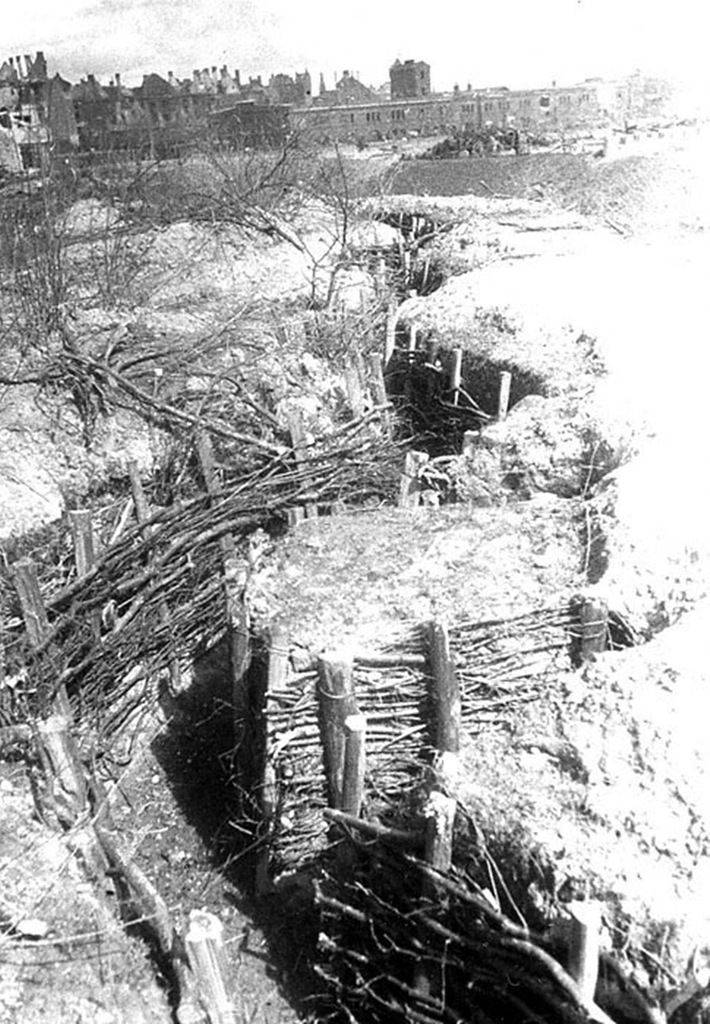
Line trenches at Koenigsberg
Soviet officers inspect one of the forts in busy Koenigsberg
There was no big artillery preparation of April 7, but artillery fired up to half of the ammunition for the enemy. Many guns fired direct fire. At the same time, large groups of bombers attacked enemy centers of resistance in the northwestern and western parts of Konigsberg in the offensive zones of the 39 and 43 armies. Aviation also attacked areas of Nasser Garten, Rosenau and Continen. In 9 hours, Soviet infantry and tanks, with the support of attack aircraft, went on the attack. Aircraft 1-th Guards ground attack divisions smashed German strongholds, equipment and concentrations of enemy infantry in small groups. Then the 276-I bomber aviation division began striking enemy positions. Soviet bombers attacked the Nasser Garten area, which promoted the advance of the 16 Guards Rifle Corps.
Practically everywhere, Soviet troops advanced successfully. The right-flank 83-I Guards Division of the 8 Corps took Shenflis, went to Rosenau. The right flank of the division took the fort No. 11, and the southern part of Seligenfeld. As a result, the threat of encirclement of the German troops, who held defenses in the area of the fort number 12, was created. The 26 Division stormed Rosenau. The assault group, with the support of a mobile group of high-explosive flamethrowers, attacked two enemy fortifications that hindered the advancement of our troops. After the impact of the flamethrowers on the embrasures of the fortifications, the Germans suffered losses and around the garrison 200 people capitulated. The 5 Division for the second time seized the area of the locomotive depot (for the first time the depot took 6 on April, but then the Germans returned the position). Continuing the movement, the guards came to Südpark, where they met a strong fire impact of German forts.
By noon, the units of the 31 Guards Rifle Division of the 16 Corps, after a hard battle, fully occupied Ponart and reached the Beek river. The advance units forced the water line and occupied the enemy’s intermediate defensive line on the north bank of the river. This accelerated the advancement of the main forces of the army. The troops and the 36 Guards Rifle Corps successfully attacked. The 18 Division attacked Nasser Garten, the 84 Division reached Schönbusch.
After the breakthrough of the second position of the enemy, the assault on the third position began. Here the advance of our troops slowed down, and in some places it was stopped. The Germans stubbornly resisted, fired violently and in some places went over to counterattacks, squeezing the Soviet troops. Thus, the fire of the forts of the Sudpark stopped part of the 26 division, the 1 division could not break through the enemy defenses in the area of the main marshalling station. The 18 Division was engaged in a hard battle with the Schoenbusch garrison, the 16 Division was also unable to advance. In the area of Rosenau, the Germans counterattacked and pushed the 83 division with the support of tanks and self-propelled guns to the infantry regiment. Then the Germans attacked the 26 Division in the Rosenau area and pushed it aside by several hundred meters. The sudden attack of a police regiment with the support of tanks and two artillery divisions forced the regiment of the 1 division to leave the railway bridge north-east of Ponart.
In the course of an hour-long cruel battle, the Soviet Guardsmen beat off the German counterattacks and restored the situation in those sectors where they were forced to retreat somewhat. 83-th Guards Division rejected the enemy in the area of Rosenau, and the troops of the 1-th and 31-th divisions after a stubborn battle captured the southern part of the main marshalling station. On the left flank, the 36 Guards Corps also continued the offensive. The 18 Guards Rifle Division crossed the Beek River and advanced to the southern edge of Nasser Garten. The 84 Division, with the support of the 16 Division units for the 15 hour. took Shenbush. At the same time they took the fort number 8, which was already in the rear of the Soviet troops. 150 people surrendered, more stocks of ammunition, food and fuel were captured, allowing the month to fight in complete surroundings.
From 13 hour. Soviet aviation again activated its actions. The command of the front, in order to worsen the enemy's ability to maneuver with his forces and strike at the reserves of the commandant of Konigsberg, decided to attack the city center. Aviation was supposed to deliver a concentrated attack on command and control facilities and defenses in the center of the fortress and the port area. A powerful blow to Konigsberg was inflicted by the aviation of the 18 Air Force (long-range aviation). Heavy bombers launched an attack in the 14 hour. and for 45 min. 516 machines that threw 3743 bombs passed through the city. The operation was personally led by the Chief Air Marshal Novikov. Almost at the same time, enemy positions were attacked by the 4 th Air Force and Baltic Fleet airplanes. Initially, the German anti-aircraft gunners tried to counteract the air attack, but rather quickly the positions of enemy air defenses were suppressed. The fire was greatly weakened, and the last groups of aircraft flew almost without opposition. Attempts to attack German fighter aircraft quite easily repulsed Soviet fighter aircraft. Several German aircraft were destroyed. On the whole, on April 7, Soviet aviation made 4758 sorties and dropped tons of bombs on the enemy’s 1658 garrison. In aerial combat and on the take-off areas, up to 60 enemy aircraft were destroyed.
The effect of the air strike was serious. As commander Galitsky recalled: “A thick column of black smoke and dust rose over the city, about a kilometer and a half wide. It was a spectacular sight. I have never seen such a powerful air strike before this day. There were fires in the city, many warehouses with ammunition and food were destroyed, communications broke down, buildings in the central part of the city destroyed earlier by Anglo-American heavy bombers, many soldiers and officers of the enemy were buried in bomb shelters. The morale of the troops of the Königsberg garrison was depressed, as we were told by captured officers and generals. ”
The commandant of the fortress O. Lyash was also impressed by the strikes of Soviet aviation and artillery. “On April 6,” Lyash wrote, “a Russian offensive began of such power as I had never encountered, despite rich experience in the east and the west ... two air fleet for days on end they continuously bombarded the fortress with their shells ... Bombers and attack aircraft flew wave after wave, dumping their destructive cargo onto a flaming city lying in ruins. ” According to him, German aviation could not counteract these attacks, as well as anti-aircraft artillery, which at the same time had to fight the enemy’s armored vehicles. As a result, all communication lines were broken. I had to use liaisons who made their way through the ruins to the command posts of units or to the troops. Soldiers and civilians were hiding from bombs and shells in the basement.
The commander of the 303 th Soviet Aviation Division, Major General G. N. Zakharov, sets a combat mission for pilots storming Koenigsberg from the air
Preparation of the Koenigsberg bombing operation on the 135 Guards Bomber Aviation Regiment
Soviet guards mortars in firing position. Southwest of Koenigsberg
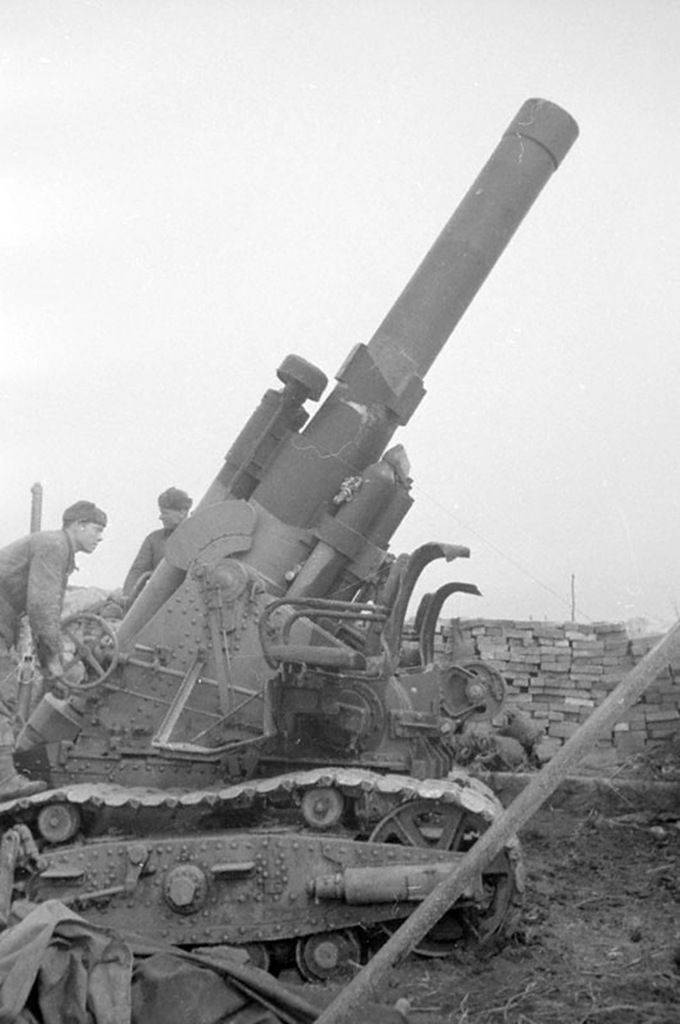
Heavy gun battery commander Captain Smirnov in the firing position firing at the German fortifications in Konigsberg
Soldiers of the battery of captain V. Leskov deliver artillery shells on the outskirts of the city of Königsberg
In the afternoon, the 11-I Guards Army advanced more slowly. The Germans fiercely resisted, continued to counterattack. The 83 Division of the 8 Corps overtook Rosenau and advanced to the south bank of the Alter Pregel. On the right flank of the division was taken the fort number 12. German troops in the Adele Neyendorf-Seligenfeld-Schönflies area were cut off from the main forces of the Königsberg garrison. The 26 Division was more difficult, the German troops in third position, despite the artillery and air preparation, retained a significant part of the fire weapons and stubbornly fought off. It was necessary to call the attack aircraft, and after their strike the division was able to break through the enemy defenses and occupy the southern part of Rosenau.
The troops of the 16 Guards Corps resumed the offensive at 16 hour. and after a two-hour fierce battle, the Germans fired their weapons and captured the area of the main rail yard. However, attempts by the 1 and 31 divisions of the Guards to break through the enemy’s third line of defense were unsuccessful. As a result, the commander of the 16 Guards Rifle Corps decided to enter the last division remaining in the second echelon, the 11 Guards Division. In 17 hour. 30 min. the division entered the battle. However, this decision was late. The Germans strengthened the defense, and brought fresh reserves into battle. As a result, the general attack of the forces of the 16 Corps, with the participation of the fresh division, could not lead to a radical change. The advance of the Soviet troops was small.
The 36 Guards Corps acted more successfully. 18-I Guards Rifle Division, pulling up the entire regimental, part of the divisional artillery and self-propelled artillery, after the 20-minute artillery strike and air raid, in 17 hour. 30 min. went on the attack. During the stubborn battle, the division captured the southern part of Nassen-Garten and started a battle for the center of this suburb, an important enemy stronghold in the third position system. By evening, the guards captured this suburb. Then the 18 Division, together with the 16 Division, attacked the river port. 16-I Guards Division, reflecting the enemy counterattack, broke through the intermediate defensive line and captured the Kontinen stronghold. Having cleared the river port together with the troops of the 18 Division, the 16 Division entered the Pregel River late in the evening. 84-I Guards Division forwarded most of the regimental and divisional artillery and vehicles of the 338-th SAU regiment across the river Beek, after a short fire attack, broke through the enemy defenses in fortified buildings and took part in the capture of Nassen-Garten, then moved on.
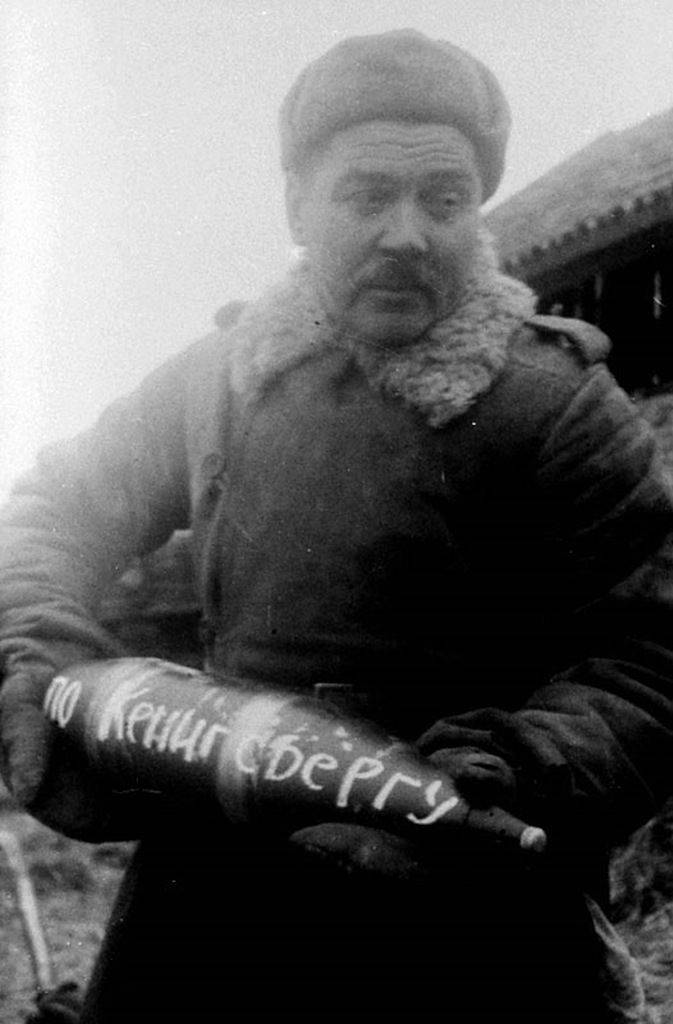
Soviet soldier guardsman artillery gunner
Soviet fighters during the battle for Königsberg, sent to a combat position under the cover of a smoke screen
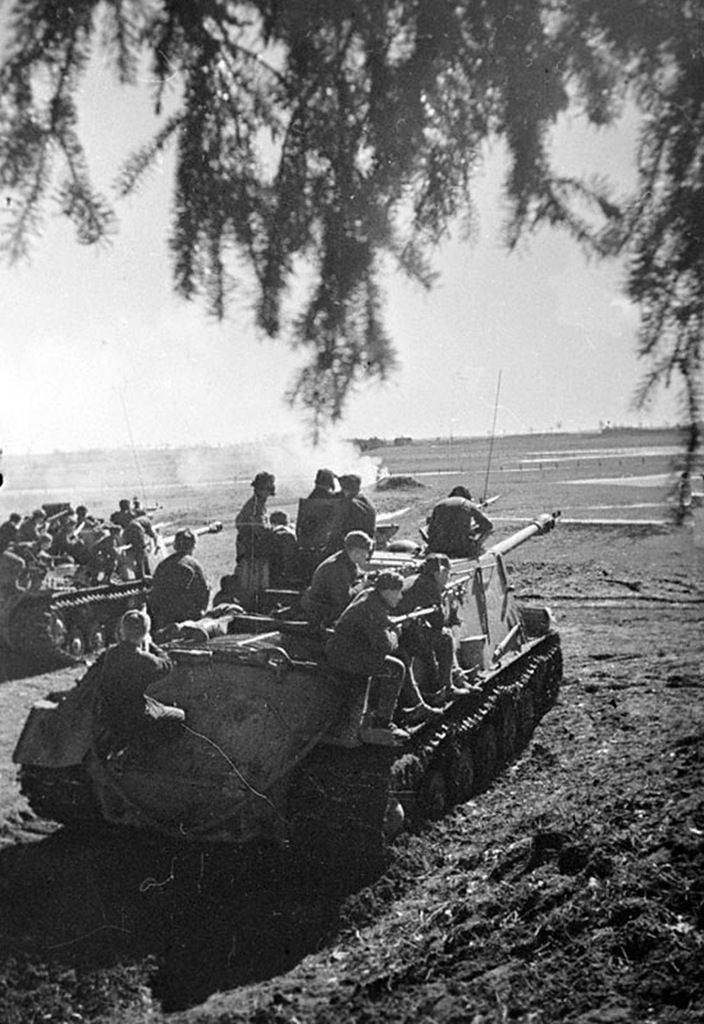
Self-propelled guns with a landing of machine gunners attack enemy positions in the area of Königsberg
The results of the second day of the storming of the fortress
11-I Guards Army Galitsky for the second day of the offensive, despite the desperate counterattack and the powerful defense of the enemy, has achieved great success. Our troops advanced 2-3,5 kilometers, breaking across the enemy’s second intermediate defensive line. The flanks of the Guards Army reached the south bank of the Pregel River, and in the center broke through to the third defensive zone. The Red Army captured three forts, 7 reinforced concrete shelters, 5 pillboxes, up to 45 fortified points, a main rail yard, 10 industrial plants and up to 100 quarters in the southern part of Konigsberg. Some German units and units defending in the southern part of the city were completely defeated, and the first units began to surrender. True, it was not possible to fully implement the offensive plan on the second day. The troops of the Galitsky army could not force Pregel and unite with the 43-th army of Beloborodov.
In other areas, the success of the Red Army was undoubted. The 2-I Guards and 5-I armies of Changchibadze and Krylov launched an offensive on the Zemland direction and bound the main forces of the Zemland task force with their actions. Now the 4 Army I Mueller was tied up in battle and could not seriously assist the Königsberg garrison.
Lyudnikov's 39 Army successfully made its way to Frisches-Huff Bay in order to cut off the Konigsberg garrison from the Zemland group. The German command, realizing the danger of a breakthrough of the Soviet troops to the coast, sought to stop the advance of the army of Lyudnikov, in order to preserve the corridor between Königsberg and the Zemland peninsula. This corridor was needed for the possibility of maneuvering troops, bringing reinforcements, ammunition and other military materials. The Germans threw into battle all the remaining reserves, and almost all of the existing aircraft, trying to throw Soviet troops. However, the army Lyudnikova stubbornly continued the offensive, rejecting the fierce counterattacks of the German troops.
43-I army Beloborodova for the day advanced by 1 kilometer. The Germans considered this area as the main one, fearing a breakthrough by the Soviet troops in the center of the city. The commandant Lyash transferred the main reserves to the north-western direction. The Germans constantly counterattacked. As a result, the Beloborodov army was able to clear 15 quarters from the enemy and captured the fort No. 5. The right wing of the 43 Army was fighting in 3-3,5 km from the Pregel River. Parts of 50 Army of Ozerov, storming the house behind the house and leading stubborn street battles, advanced to 1,5 km and cleared 15 quarters from the Nazis. Army Ozerov captured suburb Beidritten. Although the armies of Beloborodov and Ozerov advanced slightly, their actions were of great importance, as they defeated the troops of the first echelon of the Königsberg garrison and drained the main reserves of the fortress.
In the battle for Konigsberg there was a decisive change. The position of the Königsberg garrison was critical. Soviet troops broke through almost all the defensive lines in the south and north-west of the fortress. The Red Army captured the most important strongholds and centers of resistance of the German garrison in the suburbs and began the assault on the third line of defense in the center of the city. The remaining bridgehead in the hands of the Germans was completely swept by Soviet artillery. By the end of the second day of the battle most of the German reserves were already in battle, the Germans suffered serious losses. Some German units were completely defeated, others suffered heavy losses. Lyash, seeing that the situation was critical and the garrison had exhausted the possibilities for defense, suggested that the command of the 4 Army approve the plan for evacuating the garrison from Königsberg to the Zemland Peninsula. This was to save the garrison of the fortress from the environment and death. However, the command of the 4 th field army, failing to carry out the rigid installation of Hitler. The garrison was ordered to hold at all costs. As a result, the death of the Königsberg garrison became inevitable.
Soviet engineers demine the streets of Koenigsberg
The commander of the 11 Guards Army, Major General K.N. Galitsky and Chief of Staff Lieutenant-General I.I. Semenov at the card. April 1945
To be continued ...
- Alexander Samsonov
- Part 1. 70 years ago began the storming of Königsberg
Part 2. Destruction of the Heilsberg Group (4 Army)
Part 3. Sturm Konigsberg. Breakthrough German Defense
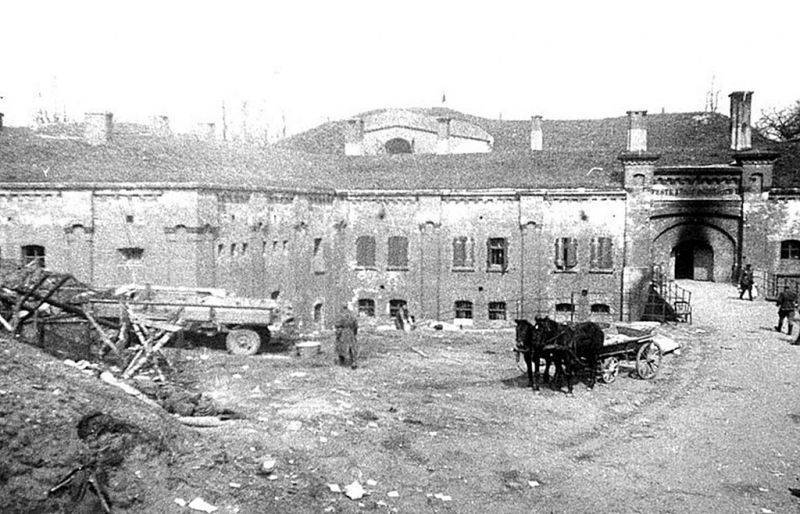
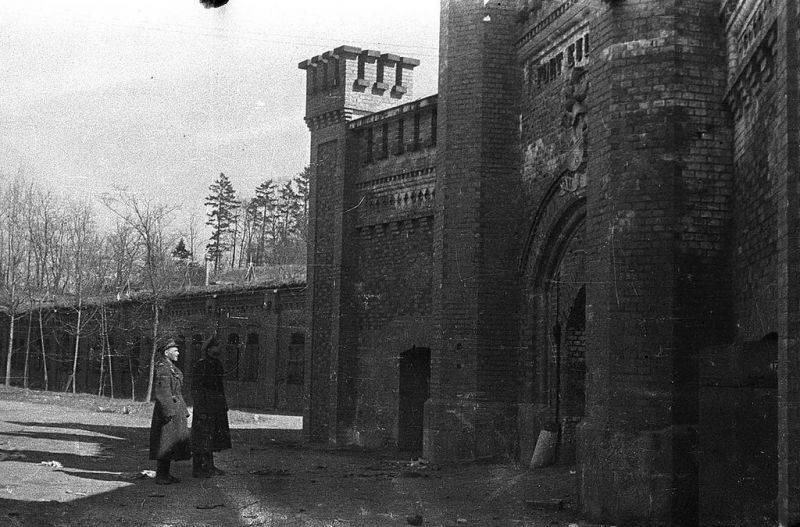
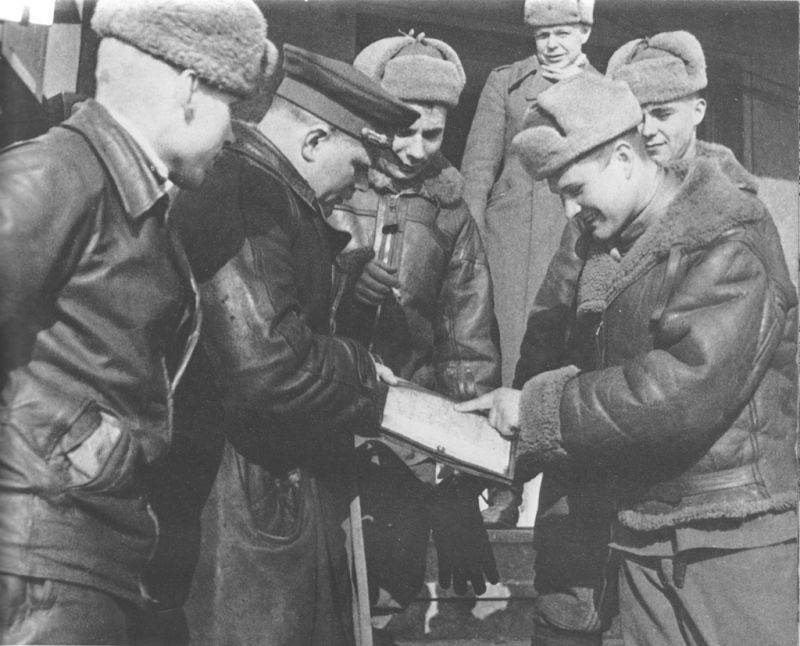
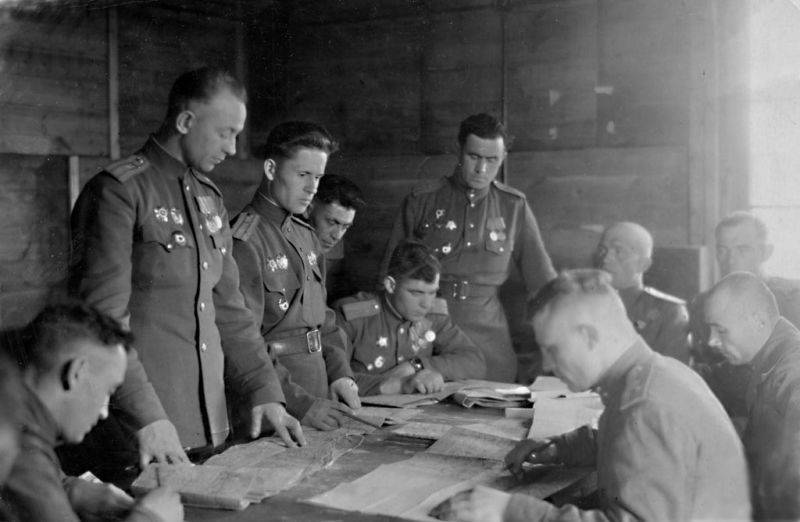
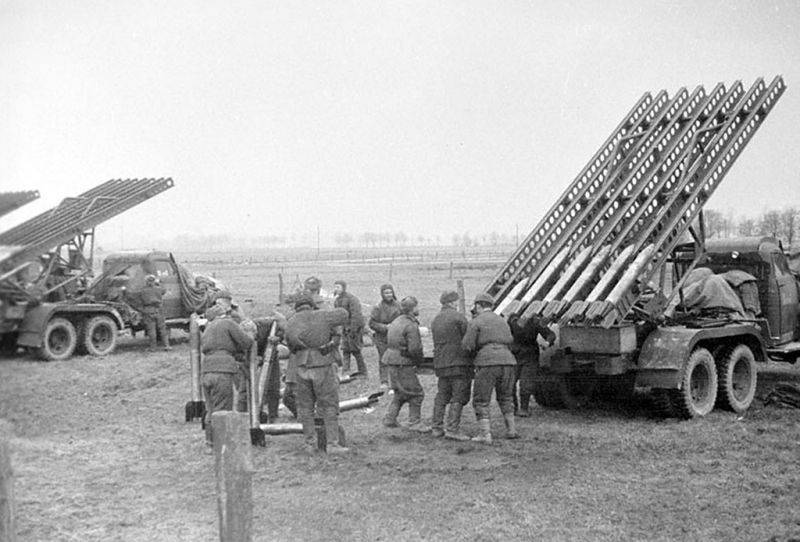
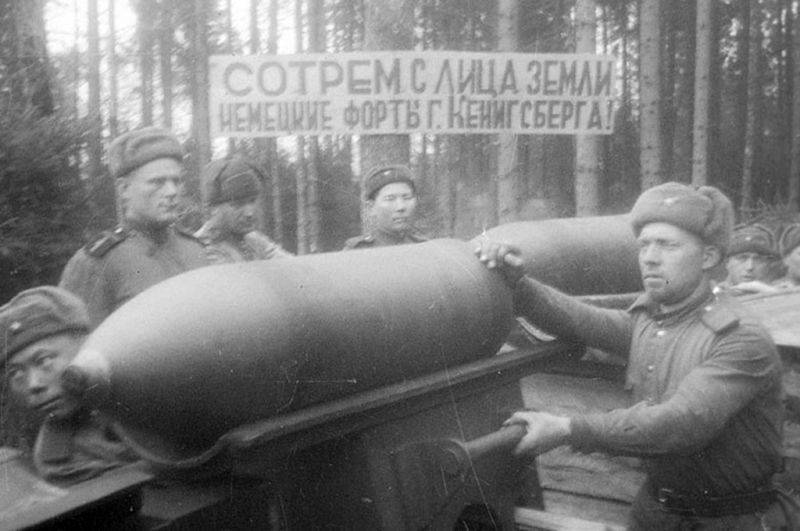
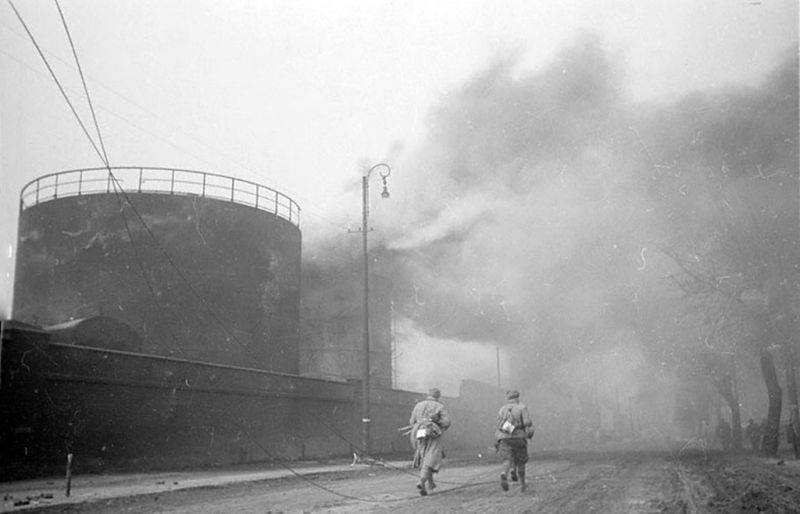
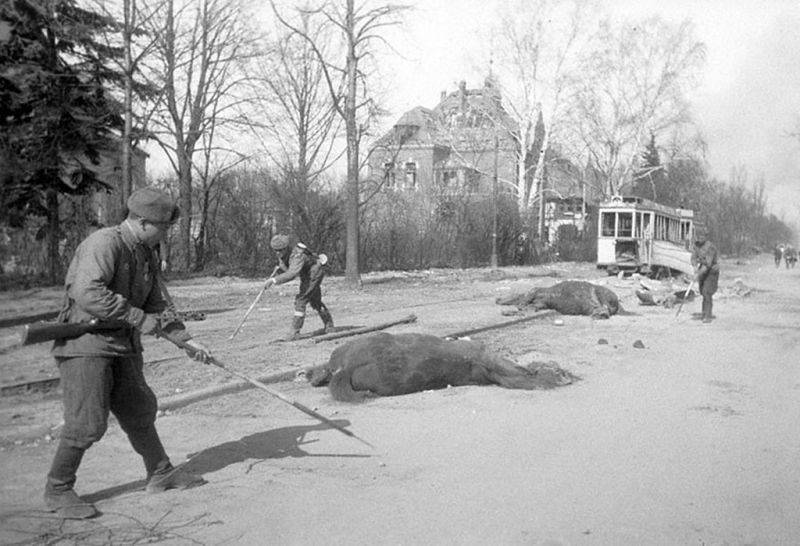
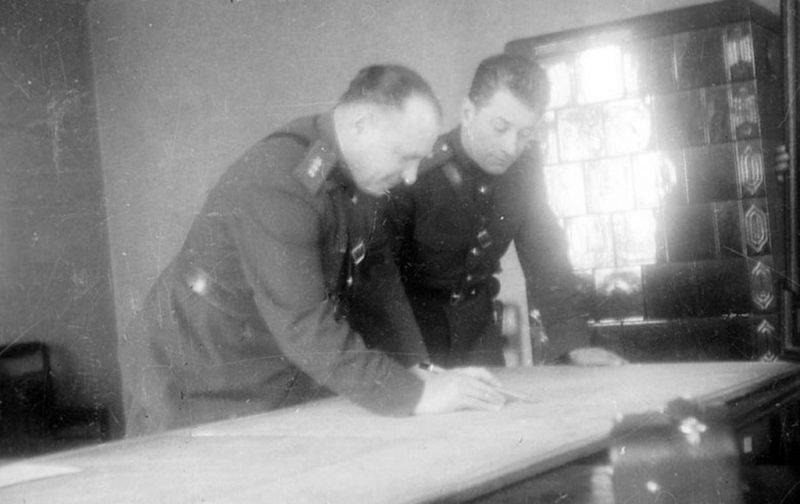
Information